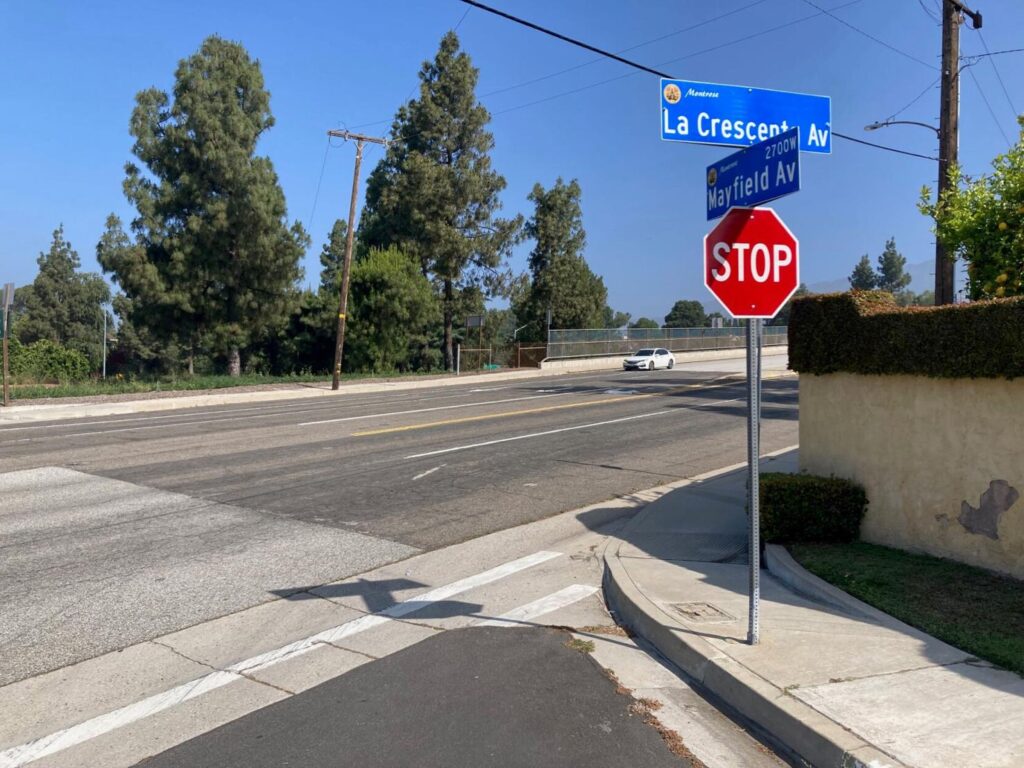The La Crescenta Avenue Rehabilitation Project, which has faced delays due to funding issues, is now moving forward after the Glendale City Council’s decision on August 27, 2024. The council approved a $14.75 million contract negotiation, ensuring sufficient funds for the project. The initiative focuses on improving safety and infrastructure along La Crescenta Avenue, including repaving deteriorated roads, adding a center two-way left-turn lane, installing protected bike lanes, and modifying traffic signals at several intersections.
The project, initially scheduled for June, had to be postponed to secure additional funding. With construction now set to begin in November 2024, it is expected to be completed by May 2025. The city’s website notes that this timeline may be affected by unforeseen circumstances.
The rehabilitation plan includes the removal of one traffic lane in each direction to make space for protected bike lanes. Traffic signals at key intersections—Montrose Avenue, Honolulu Avenue, Shirlyjean Street, and Roselawn Avenue—will also be modified. Despite the project’s focus on safety improvements, the decision to move forward has not been without controversy.
In May, after receiving bids that did not meet minimum contractor qualifications, the City Council directed the city clerk to re-advertise for new bids. Although three new bids were received in July, they were similarly deemed non-compliant. City Manager Roubik Golanian recommended rejecting the bids and negotiating directly with contractors to reduce administrative costs and keep the project on schedule.
Deputy Director of Public Works and City Engineer Sarkis Oganesyan presented two options for the council’s consideration. The first was to proceed with the original scope of work, while the second included a “quick build demonstration” to temporarily showcase lane reductions and bike infrastructure before full implementation. However, this demonstration would have added $800,000 to the project cost, and the council chose not to approve it.
Public opinion on the project remains divided. Melissa Moulton Church, a resident and mother of a student at nearby Fremont Elementary, spoke in favor of the project. She emphasized that speeding vehicles near the school pose a safety risk and expressed frustration with delays, attributing them to a vocal minority opposing the changes.
“This project is about improving the safety of a residential street near an elementary school, but the conversation has been hijacked by a handful of people… The city of Glendale has delayed real safety measures affecting a community full of schoolchildren to appease a couple of people who have made it their hobby to oppose any proposal that doesn’t directly benefit them,” Moulton Church said.
On the other hand, resident Hovik Avackian opposed the plan, citing concerns about the removal of parking spaces and questioning the need for the $17 million project. He argued that speed control does not justify such an expenditure, particularly when parking spots would be lost.
The discussion also touched on the potential impact on emergency response times. Councilman Ardy Kassakhian referenced studies from the Federal Highway Administration that suggest “road diets”—which reduce the number of lanes—do not negatively affect emergency services and may even improve response times.
“I am for supporting this to move forward as it was proposed by staff [and planned by professionals]… who have done the research and work to make that stretch of road safer for everyone,” Kassakhian said.
Councilman Dan Brotman echoed Kassakhian’s sentiments, noting that lane reductions can enhance road safety without significantly affecting travel or emergency response times. He added that La Crescenta Avenue, with its low traffic volumes and high collision rates, is well-suited for such changes.
However, opposition remained. Councilmen Ara Najarian and Vartan Gharpetian both voted against the project, expressing concerns over its impact on a “major arterial” roadway and opposing the removal of traffic lanes and parking.
Despite differing opinions, the majority of the council supported moving forward with the project, with Mayor Elen Asatryan casting her vote in favor.







